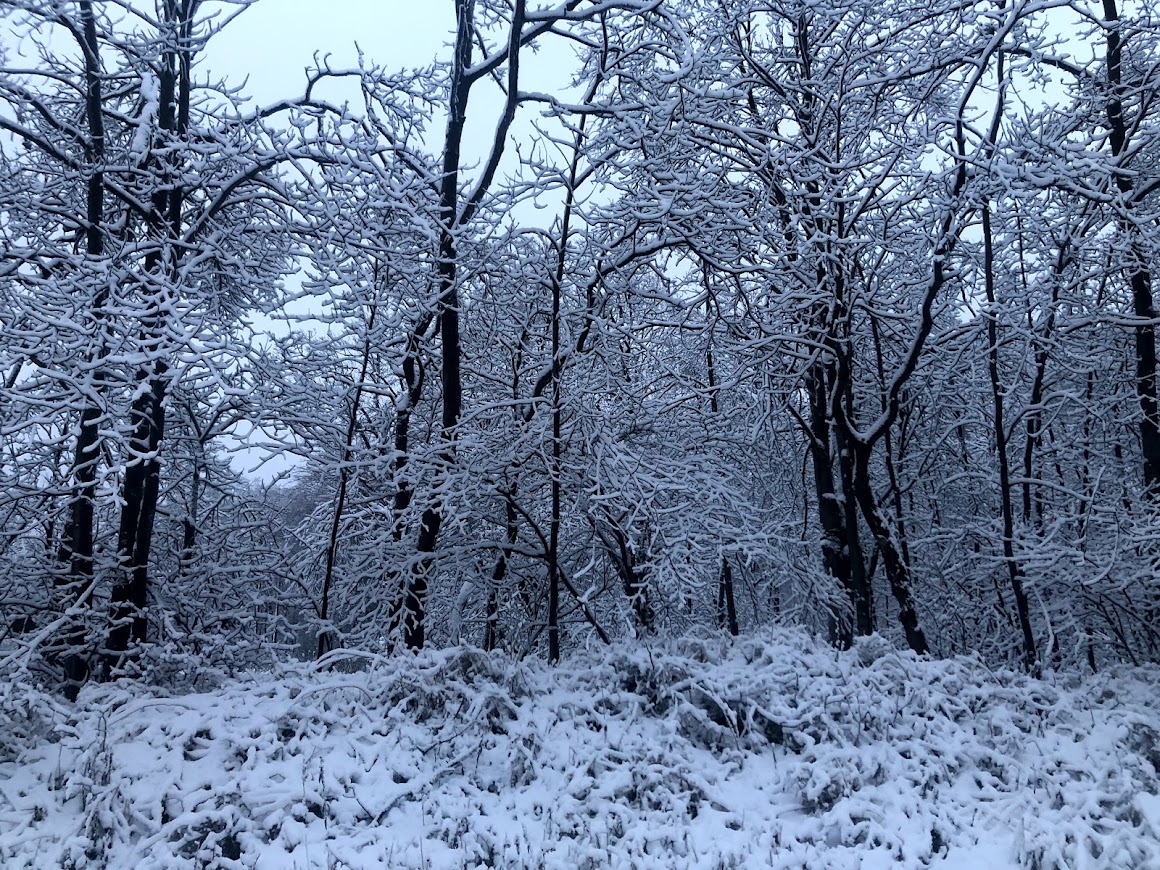Forest Fridays: Life below the snow
By Robin Eng, Forest Fridays
For many of us, thoughts of winter are inseparable from snow-covered landscapes. While we enjoy the beauty and softness of snow, along with the winter activities it supports, other creatures appreciate the snow for a different reason. For those small enough to enjoy it, a persistent layer of snow presents an exclusive world of resources and protection beneath its surface. That world is known by scientists as the subnivean environment.
Image: Winter hunting, photo by Beau Martonik

For many small mammals (but also for certain plants, microbes, and other taxa), a layer of snow is crucial to their winter activities. When six or more inches of snow accumulate, the snow in contact with the ground may sublimate, creating a layer of space for movement between the ground and a frozen crust on the surface of the snowfall. Together, the frozen surface and packed snow beneath it act as an effective insulator, such that the subnivean area between the snow and the surface of the ground holds stable around 32 degrees (F), regardless of the air temperature above.
By moving about below the snow’s surface, subnivean creatures are protected from many predators, and have access to food resources that would otherwise be covered by the snow. This stable environment is utilized by a variety of small mammals. These animals can forage for plants, seeds, tree bark, and grubs, all under the relative safety of the snowpack.
But it’s not just about eating. Subnivean creatures also work hard to excavate networks of tunnels and caverns in the snowpack, including below-snow rooms for resting, feeding, and defecating. Voles are well known for this behavior and will rarely come to the surface if a stable subnivean zone persists. In fact, with deep and persistent enough snowpack, the subnivean zone can provide suitable conditions for voles to successfully reproduce over the winter.
While the snow provides protection from many threats, it’s not a stress-free ride for subnivean creatures. Some predators can exploit this ephemeral niche as well, including weasels, martens, and shrews – all predators small enough to navigate the networks of subnivean habitat in search of prey.
Image: Snow along Rockton Trail in Clearfield County, by Britt Madera

Even though they can’t maneuver through the subnivean zone themselves, certain other predators have adaptations that allow them to seek prey in this underground ice world. Owls and foxes are two such predators. Both well-known for their keen hearing, these impressive predators can pinpoint the location of a small mammal beneath an opaque layer of snow. This allows them to utilize the element of surprise in an attack from above with incredible precision.
It’s remarkable but not surprising that a wide variety of species has evolved to utilize and depend upon seasonal deposits of snow. But it does beg the question: How will these creatures fare as our climate changes and the snow doesn’t persist, or fall at all?
About the author: Robin Eng
Robin Eng is a Wildlife and Community Ecologist who has been working with DCNR since 2023. She is fascinated by the intricacies of species interactions and the varied mechanisms that allow biodiversity to thrive in different climates and ecosystems. For work and for fun, Robin enjoys philosophizing about the natural world, and does so while engaging in many of her other hobbies, such as gardening, foraging, and playing disc golf.



